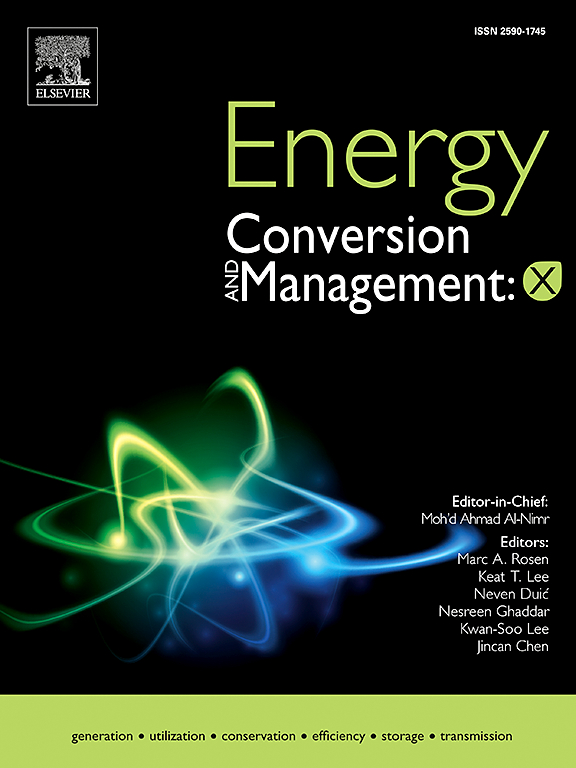不同几何和操作条件下单鸭和多鸭WEC的性能、效率和能量收集
IF 7.1
Q1 ENERGY & FUELS
引用次数: 0
摘要
本文研究了单鸭子和多鸭子俯仰式波浪能转换器(WECs)的水动力特性、性能效率和功率吸收。计算结果与已发表的实验数据进行了比较和验证。目的是确定里海Astara港口最可能的波浪条件下最合适的WEC大小,同时获得不同几何比(gr)的最佳功率起飞(PTO)阻尼系数。然后在考虑双向和单向PTO系统的情况下,计算不同波高和周期下的功率提取和性能效率。研究发现,当GR为3.2时,鸭子WEC的性能效率更高,并且由于采用双向PTO系统,吸收的功率增加了45.4%。相互作用因子解释了由于WECs的邻近而导致的WECs之间的干扰。研究全面考察了不同规则波特性范围下WEC的动态响应、性能效率、功率提取和相互作用因子。总的来说,这项研究为常规波浪中单个和多个鸭子的行为和效率提供了有价值的见解,并有助于开发和优化波浪能技术。本文章由计算机程序翻译,如有差异,请以英文原文为准。
Performance efficiency and energy harvesting of single and multi-duck WEC under diverse geometrical and operational scenarios
This study examines the hydrodynamic behavior, performance efficiency, and power absorption of single and multi-duck pitching-type wave energy converters (WECs). The comparison and validation of computational results have been conducted with previously published experimental data. The aim is to identify the most suitable WEC size for the most probable wave condition of the Astara port in the Caspian Sea while obtaining the optimum power take-off (PTO) damping coefficient for different geometry ratios (GRs). The power extraction and performance efficiency are then calculated at various wave heights and periods, considering both two-way and one-way PTO systems. It is found that the performance efficiency of the duck WEC with a GR of 3.2 devotes higher efficiency, and also, by engaging the two-way PTO system, absorbs 45.4% more power. The interaction factor accounts for the interference between the WECs due to their proximity. The study thoroughly examines the dynamic response, performance efficiency, power extraction, and interaction factor of the WEC under varying ranges of regular wave characteristics. Overall, this study provides valuable insights into the behavior and efficiency of single and multi-duck WECs in regular waves and can aid in developing and optimizing wave energy technologies.
求助全文
通过发布文献求助,成功后即可免费获取论文全文。
去求助
来源期刊

Energy Conversion and Management-X
Multiple-
CiteScore
8.80
自引率
3.20%
发文量
180
审稿时长
58 days
期刊介绍:
Energy Conversion and Management: X is the open access extension of the reputable journal Energy Conversion and Management, serving as a platform for interdisciplinary research on a wide array of critical energy subjects. The journal is dedicated to publishing original contributions and in-depth technical review articles that present groundbreaking research on topics spanning energy generation, utilization, conversion, storage, transmission, conservation, management, and sustainability.
The scope of Energy Conversion and Management: X encompasses various forms of energy, including mechanical, thermal, nuclear, chemical, electromagnetic, magnetic, and electric energy. It addresses all known energy resources, highlighting both conventional sources like fossil fuels and nuclear power, as well as renewable resources such as solar, biomass, hydro, wind, geothermal, and ocean energy.
 求助内容:
求助内容: 应助结果提醒方式:
应助结果提醒方式:


